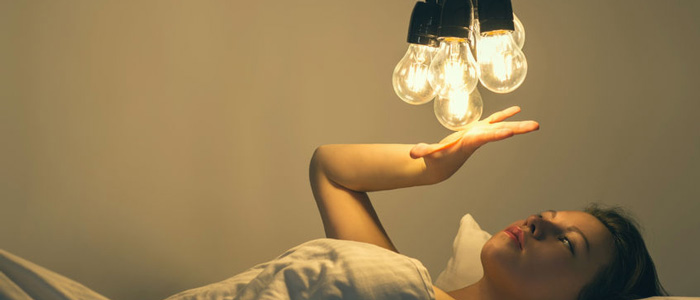Other than just being much tireder, the brains of insomniacs have some marked differences that may shed a little light on what’s happening and potentially how their condition can be treated. By understanding what’s going on inside the brains of insomniacs we can maybe better understand why they struggle to get to sleep and how we can help them to overcome this challenge.

It’s first useful to note that there are various different types of insomnia. One type is delayed sleep phase disorder, which is particularly common among teenagers and which is triggered by the circadian rhythm being out of sync. In other words, your biological clock is telling you to be awake and asleep at the wrong times – which is also partly why teenagers are often so groggy and sleepy during the day. This tends to get less severe as you age.
Insomnia can also be caused by psychological issues including stress, anxiety, mania and even depression. It can also sometimes be caused by physiological conditions such as sleep apnea, in which patients find that they stop breathing during the night and wake up suddenly and briefly as a result.
But a recent study has found another potential cause seated in the brains of insomniacs. This key difference may shed some light on the problem (though ironically shining light is not helpful when you’re trying to get to sleep).
Motor Cortex Plasticity
The study was published in the journal Sleep this year and found that those with chronic insomnia not triggered by other causes, showed an increased plasticity response in the motor cortex following exercise.
For those not familiar with the term, plasticity refers to our brain’s ability to change shape in response to particular stimuli by forming new neural connections and thus altering our ‘connectome’.
What this means, is that someone with insomnia may in fact have an increased ability to learn new motors kills. Strange.
The study discovered this by using transcranial magnetic stimulation to elicit responses from particular neurons in the brains of their patients. This way they attempted to train their participants to move their thumbs in a particular way. What they found, was that the brains of the insomniacs would adapt much more quickly than the brains of the patients who had no difficulty sleeping.
The Theories
The initial theory was that those with insomnia would actually have reduced plasticity. This would make sense, seeing as we lay down many of our memories during sleep and seeing as most insomniacs suffer with shorter memory and attention spans and struggle to commit new information to memory.
Unfortunately though, there is currently no concrete explanation for why the reverse should be true.
One theory is that an overabundance of brain plasticity could in fact be the cause of insomnia. It’s theorized that creative ‘always thinking’ types might in fact experience such an abundance of brain activity that they struggle to sleep.
This is one explanation for findings that show a correlation between night owls and high intelligence (1). At this juncture it’s important to note that these are only general findings – it does not mean that your night owl friend is necessarily more intelligent than you.
Another theory reverses this causality and suggests that insomniacs might experience more plasticity because of their insomnia. A lack of sleep results in stress on the brain, low energy and other negative effects, so it’s possible that the brain becomes more adaptable and plastic in a bid to adapt to that strain and thereby the correlation emerges.
Either way, it’s an interesting new angle and at least it means there’s an upshot to that insomnia of yours!



